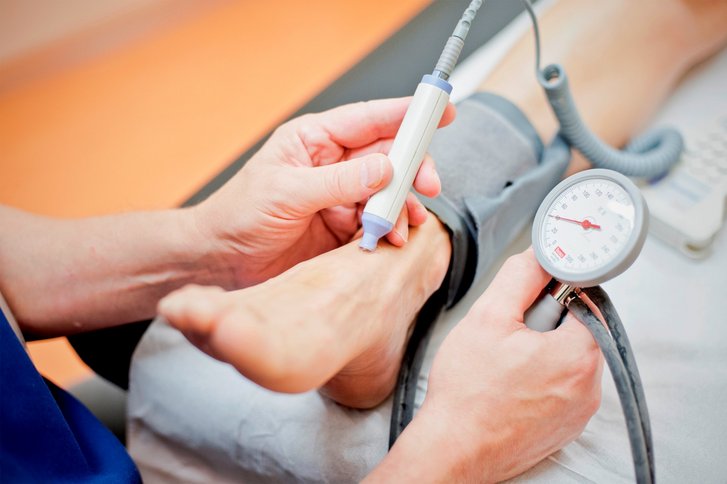Typical symptoms of PAOD are exercise-induced muscle pain in the lower limb(s): After a short distance of walking you feel pain in the leg(s). You have to stand still until the pain is over. These complaints are commonly known as "window shoppers' disease" or intermittent claudication. Responsible are arterial vascular occlusions, caused by the hardening of arteries, the so-called arteriosclerosis.
COVID-19 –> information and vaccination centre
Peripheral arterial occlusive disease (PAOD)
Peripheral arterial occlusive disease (PAOD) causes severe constriction or even complete occlusion of the blood vessels in the legs, more rarely in the arms, resulting in painful circulatory disorders.

The first step: The right diagnosiss
In order to determine the cause of your complaints, we carry out a comprehensive vascular medical examination. During this examination, we check your pulses in the groin, the hollow of the knee and on the feet, among other things. We also examine your body for possible further vascular deposits.
Color-coded duplex ultrasonography is most important imaging technique for the diagnosis of vascular diseases. In addition, magnetic resonance angiography can be used. Both procedures do not stress your body neither with X-rays nor with the administration of contrast medium.
Tailored to you: Our treatement offer
As soon as the disease has been diagnosed, we will coordinate the further course of treatment with you. In doing so, we pursue two important therapeutic goals:
Restoration of walking ability: Minimally invasive procedures (so-called revascularisation procedures) have proven to be effective for the treatment of constrictions, which we use with great experience. With the help of a catheter we can expand the narrowed vessel, cut away the deposit from the inside all around or insert a stent coated with medication. The procedure takes about 30 to 60 minutes. If necessary, you will be in a short twilight sleep (sedation).
Therapy to stop the progression of the disease: A change in lifestyle can effectively improve the arterial blood flow. Regular exercise and a healthy diet are particularly important in this regard. After clarifying the individual risk factors, we will discuss the appropriate measures with you in detail and give you advice on what you should consider in the future.
Maintaining good care: Your further treatment
As a rule, the vascular function recovers after the initiated therapy measures, so that your walking performance and resilience normalizes after a few months. In close cooperation with our clinic, your General Practioner will take over further care. Should serious complaints or questions arise, the angiology team is always available to assist you.